Wild About Texas – August, 2008
Texas Cacti for the Garden
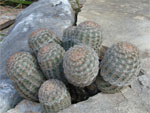
Lace cactus.
Photo by Joe Marcus.
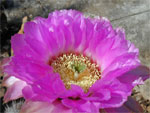
Lace cactus.
Photo by Joe Marcus.
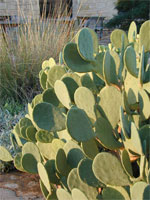
Spineless prickly pear. Photo by Joe Marcus.
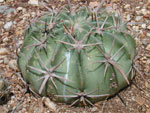
Horse crippler.
Photo by Joe Marcus.
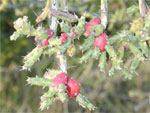
Pencil cactus, tasajillo. Photo by Joe Marcus.
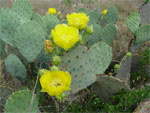
Texas prickly pear.
Photo by Melody Lytle.
As the heat and drought of Texas summers take their toll, xeric landscapes — and cactus gardens, in particular — make a lot of sense. Not only are the rich colors and large blossoms of many species stunning, the toughness of these evergreen plants makes them well suited to dry and hot conditions.
According to A. Michael Powell of Sul Ross University in Alpine, author of The Cacti of the Trans-Pecos and Adjacent Regions (2004), there are 132 species and subspecies of cacti in Texas, growing in habitats ranging from deserts, where they are most abundant, to forests, mountains, and grasslands as well. Surprisingly, one species of prickly pear (Opuntia humifusa) occurs as far north as Canada! The sizes and forms of species that are commercially available offer both subtle and dramatic design opportunities.
Larger cacti are stately in the garden and can be used as artistic, sculptural focal points or accents. Plants like tree cholla, pencil cactus, and prickly pears have personalities strong enough to hold their own with grasses, small shrubs, and large perennials such as big muhly (Muhlenbergia lindheimeri), Texas sage (Leucophyllum sp.), and Texas orange lantana (Lantana urticoides). Combine square-bud primrose (Calylophus sp.) and cherry sage (Salvia greggii) to flesh out an attractive garden arrangement. Agaves, yuccas, and sotols will spice up the Southwestern flavor.
In contrast to these succulent giants, most cacti are relatively small. Lace cactus and claret cup, for example, are steadfast against harsh climates and soils but are vulnerable to being crowded out by larger garden plants. These diminutive cacti may prefer an extra shower from time to time, but withholding excess irrigation can help restrict competition from other vegetation. In natural settings, small plants are useful in crevices and on thin, rocky soils with southern and western exposures. Mimicking these conditions in the garden will advance both aesthetic and horticultural aspects of the design.
All cacti require good drainage. Provide this using a combination of raised beds, soil cones, and sand or gravel soil enhancements. Many species will thrive with ample organic matter supplied by compost, as long as the site remains fairly dry. Transplants and young plants may initially need supplemental water, seedlings will often be found growing under the shade and protection of open shrubs or overhanging rocks. Fertilizing and irrigating may be optional, but weeding around small specimens is essential.
Of course, handle with care any plants sporting sharp spines or tiny glochids (minute spines that easily lodge in the skin and are difficult or impossible to remove). Wear thick leather gloves, wrap plants with newspaper, or handle them with tongs to avoid unnecessary discomfort.
Below is a list of Texas native cacti that have proven to be good sports under cultivation. Unfortunately, some of these plants are not easily found in local garden centers, and a bit of research may be required to acquire them. Luckily, many are offered at the Lady Bird Johnson Wildflower Center’s semi-annual plant sales (see website below for more information). Overharvesting from wild areas is a serious threat to many species, so harvesting should occur only from cultivated or “doomed” (condemned for destruction) sites, observing strict ethical standards.
Cylindropuntia imbricata
tree cholla
Cylindropuntia leptocaulis
pencil cactus, tasajillo
Echinocactus texensis
horse crippler
chinocereus reichenbachii
lace cactus
Echinocereus triglochidiatus
claret cup
Mammillaria heyderi
little nipple cactus
Opuntia ellisiana
spineless prickly pear
Opuntia engelmannia
varieties Texas prickly pear
Opuntia macrorhiza
common prickly pear
Opuntia rufida
blind prickly pear
For more information about native plants and the Lady Bird Johnson Wildflower Center, go to www.wildflower.org.
About the author: Andrea DeLong-Amaya is the director of horticulture at the Lady Bird Johnson Wildflower Center in Austin.

